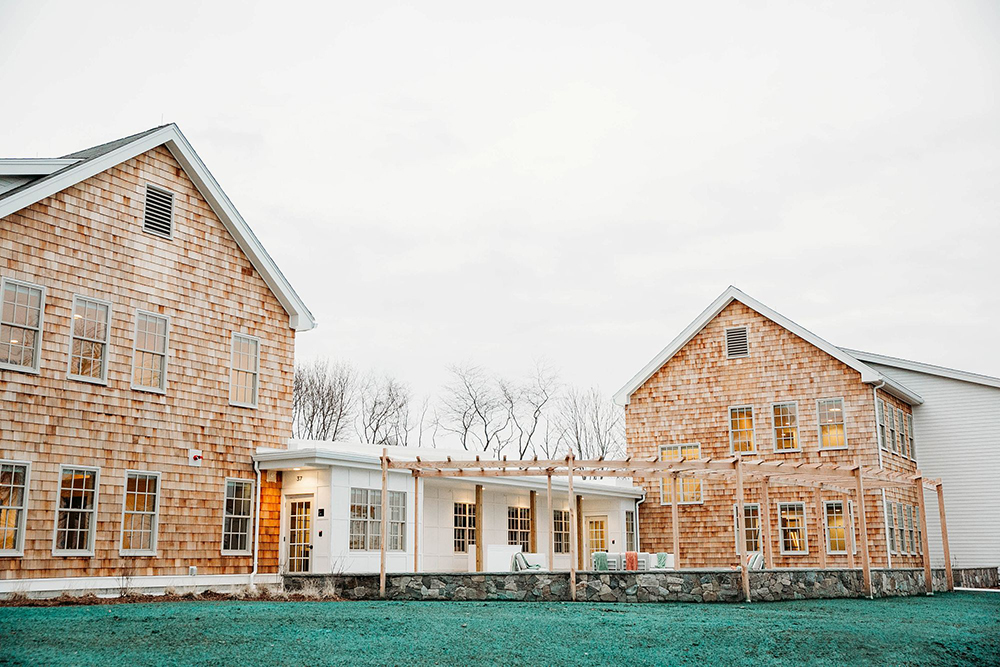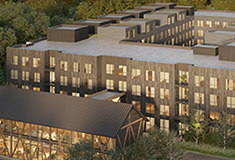News: Financial Digest
Posted: July 11, 2008
Comm'l. mortgage funds still available at competitive rates
According to the Federal Reserve Bank there are some indications of improvement in the U.S. banking sector, but on the whole it is a somber picture of the short to mid-term outlook for the industry.
Banks have been responding to the economic turmoil touched off by the subprime meltdown last year. There is still talk that banking institutions will continue to face deteriorating loan quality. The house prices are still declining in many localities and losses related to residential real estate, including loans to builders and developers, are bound to increase further.
In addition weak U.S. economic conditions could well extend problems to other kinds of lending portfolios, such as credit card loans, as well as corporate loan portfolios. There is no question that liquidity conditions will become tighter, if uncertainties in the capital markets fail to subside or if credit conditions deteriorate.
The good news is that the banking sector isn't completely on the rocks, though it hasn't really bounced back from a very tough 2007 fourth quarter, when some of the largest bank holding companies, which represent more than three-fourths of all bank holding company assets, reported losses totaling more than $9 billion. In the first quarter of 2008, by contrast, the same bank holding companies reported profits of $5.2 billion and reduced trading losses. Consequently, bank holding companies overall reported healthy net income figures for the quarter which was a considerable improvement over the prior quarter's losses.
The Fed has been pushing banks to bolster their liquidity, and they've been doing so.
Before the recent market turbulence, the Federal Reserve, in many cases along with the other U.S. banking agencies, acted on a number of fronts to alert financial institutions about emerging risks, for example by issuing supervisory guidance on nontraditional mortgages, home equity lending, commercial real estate, and subprime lending. Most of the banks in New England are in very good shape and there are not a lot of problem commercial loans to speak of.
Having said all this and despite all the things we hear about, there is still plenty of mortgage capital available for commercial real estate. Local, regional and national lenders are willing to provide capital for all types of properties, although there is a focus on more conservative underwriting. Ten year fixed rate are still in the 6-7% range and in some cases you can borrow up to 80% in some instances. These rates are still extremely attractive when you look back historically. Shorter terms are also available at lower rates. There is also funding available for development, construction or rehabilitation projects. It is still fairly difficult to fund "for sale" housing but not impossible. It will take the right project with the right borrower to get it done today. There is also private and institutional equity as well as mezzanine loans available.
Everyone has become aware that Wall St. is not a good source for commercial mortgages today, although that may be changing. The interest rate spreads are still higher than other sources, but the gap is shrinking. I am confident that these sources will open up in the near future and once again become very competitive.
The bottom line is that mortgage banking firms like my company, Capital Access, keep an eye on the available sources of funds. Whether it is a local bank, national bank, life insurance company or other institutional sources we know where and how to fund properties. Commercial loans are being funded on a regular basis and we encourage owners and developers to reach out for our assistance. We have been here for the past twenty years and I would be happy to discuss financing needs.
Barry Winer is president of Capital Access, Inc., Newton, Mass.
Tags:
Financial Digest
MORE FROM Financial Digest
Preservation of Affordable Housing secures $23.5 million in financing from Rockland Trust and Citizens Bank
Cambridge, MA The nonprofit Preservation of Affordable Housing (POAH) has secured $23.5 million in financing from Rockland Trust and Citizens Bank to transform a 150-year-old, underutilized church complex into housing. The project will ultimately create 46 affordable family-sized apartments.
Columns and Thought Leadership

Conn. hospitality market: A technical appraisal perspective on market dynamics and valuation challenges (2019-2025)
The Connecticut hospitality market has demonstrated uneven recovery patterns between 2019 and 2025, with boutique and historic properties achieving $125 RevPAR in 2025, up 8.7% from the 2019 level. Coastal resort properties achieved a $105 RevPAR in 2025, representing 10.5% growth since 2019. Casino corridor properties maintained modest growth with RevPAR improving 4.5% to $92 in 2025.

Examples of investors who used Kay Properties for legacy and estate planning purposes for rental property/portfolios - by Dwight Kay
Preserving wealth across multiple generations requires strategic planning, foresight, and the right investment vehicles. Delaware Statutory Trusts (DSTs) offer a powerful solution for families looking to build and protect their financial legacy and to efficiently plan for their estate.









